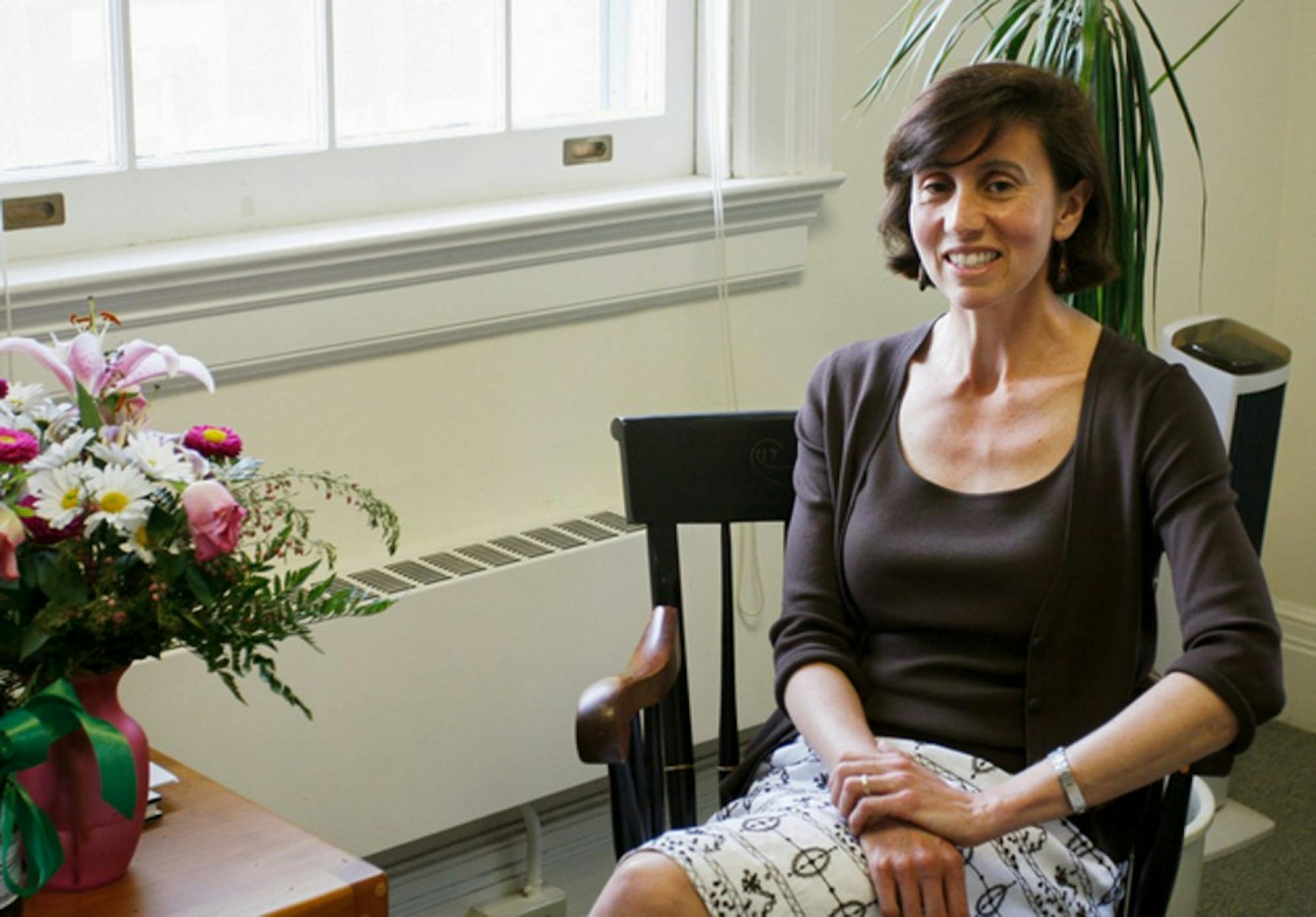Former dean of admissions and financial aid Maria Laskaris left her position to become the special assistant to the provost for arts and innovation, Provost Carolyn Dever announced on Aug. 27. Former admissions director Paul Sunde will assume Laskaris’ post as interim dean for the upcoming academic year.
As admissions director, Sunde conducted the admissions office’s day-to-day activities, but in his interim post, he will head larger admissions planning efforts.
Laskaris started her new position Sept. 1. In this new position, which reports to the provost, she will be charged with organizing planning and communications for the College’s arts and innovation district.
The district includes the Dartmouth Entrepreneurial Network Innovation Center, the Hopkins Center for the Arts, New Venture Incubator and the Hood Museum of Art.
Laskaris began her tenure at the admissions office in 1987 — just three years after she graduated from the College. She was appointed dean in 2007, after 20 years in the department.
She said that after more than 25 years at admissions office, she was eager to test a new position. She also cited a deep interest in the arts as another motivation for the move.
Despite the change in leadership so close to the Nov. 1 early decision deadline, Laskaris does not foresee a turbulent transition. Her staff has completed the bulk of the planning for the fall admissions season, she said, so they should be well-equipped to accomplish the admissions office’s goals.
Sunde said the other 14 employees in the admissions office have helped fill the gap Laskaris left. He noted that many staffers have assumed extra responsibilities — for example, other employees plan to embark on recruiting trips that Laskaris had been scheduled to attend.
Mark Robinson, a clinical education and history professor at the University of Southern California who has led courses on higher education and consulted for higher education institutions, said that leadership transitions depend on the staff itself.
“It really depends on the team of people who are behind their leader. I’ve seen instances where the process could run smoothly if everyone [on the team] has been pulling their weight, but we could also find cases where it could potentially be negative,” he said.
He also said that leadership changes are fairly common in universities, so Laskaris’ move does not necessarily herald a negative impact.
Since Laskaris began her post for the 2007 admissions season, the College’s admissions rate has hovered between 10 and 13 percent, while the yield rate has remained between 48 and 52 percent. Harvard University had a nine percent admit rate in 2007 and a five percent rate in 2015, while Yale University has boasted admissions rates around six percent for the past four years. Last year, Dartmouth had the second-highest admissions rate in the Ivy League, only outpacing Cornell University, which accepted 15 percent of its applicants.
Throughout Laskaris’ tenure, she sought to increase campus diversity. In 2007, before she assumed her new role as dean, 55 percent of entering students were white. In the past five years, about 50 percent of the average entering class has been white. The largest increase of any group has been in the percentage of Asian-American students who matriculate — 18 percent of the Class of 2017 identify as Asian American, compared with 13 percent of the Class of 2009. Although data on entering students is not yet available, yield data show that 20 percent of students who accepted admissions offers this year were Asian American.
Since 2007, the College has accepted fewer students from public schools. Each year between 2003 and 2006, more than 60 percent of Dartmouth’s entering students attended public schools, and in 2007, when Laskaris took over, 59 percent attended public schools. Over the past five years for which data are available, just once — in 2014 — has more than 55 percent of the entering class included students from public schools. Yield data indicate that 56 percent of those who accepted admissions offers this year went to public high schools.
Women’s and gender studies professor Giavanna Munafo has taught at the College for more than 21 years and has observed several generations of students.
Munafo said that she has seen greater diversity among students since starting at the College in 1994. Since Munafo began, the visibility of students of color has increased drastically, she said. The number of minority students has swelled and communities have become more welcoming for those students, she said, and the number of students who self-identify as queer or transgender has also increased.
She said students have remained as academically engaged as always, but that she has been hearing more students say that they have been unable to find intellectual communities.
Munafo added that recent classes have been more open to engaging with challenging issues regarding gender and sexuality. But she said that she could not attribute this change to the admissions office.
“I don’t know how admissions could weed people out by their exposure — how could they when it’s such an uneven product that students are getting,” she said.
The position of dean of admissions and financial aid is slated to be filled by July 1, 2016. Sunde plans to return his prior position as soon as possible.




